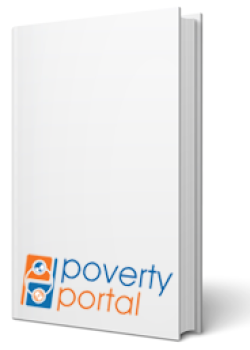Evaluating the Poverty Impact of Economic Policies
Some Analytical Challenges
Author : Bourguignon, F., Pereira da Silva, L., and Stern, N.
Year: 2002
Acc. No: 685-S
Category: Soft Documents
Type of Resource: Evaluation, Poverty, Distribution, Macroeconomic model
Languages: No
ISBN: English
Where redistribution and anti-poverty policies consist of cash transfers allocated according to some pre-specified rules, evaluating their impact on the distribution of living standards and poverty might seem straightforward. It seems sufficient to apply the transfer rules to some representative sample of households. This is the essence of 'incidence analysis' and micro-simulation techniques used in many countries. In practice, however, things are not so easy. There are various reasons for this: a) cash transfers are likely to modify behavior, which in turn can generate economy-wide changes through general equilibrium effects; b) in most developing countries, transfers are made only indirectly, through public spending or indirect taxation, with allocation rules which are often far from transparent and may themselves depend on behavior; and c) implementation may be partial or distorted. More fundamentally, poverty reduction policies often go through both macro-economic and structural instruments aimed at enhancing economic activity and growth The actual change in individuals' standard of living generated by these instruments is not easy to work out because of the fundamental difficulty of establishing satisfactory linkages between micro and macro analysis, whether the latter refers to aggregate demand, medium -run growth or general equilibrium in a somewhat disaggregated framework. This paper reviews the various tools presently available to evaluate the impact of economic policies in general on poverty reduction, or on the distribution of living standards, and explores directions for improvement. It is organised around the common thread of 'incidence analysis'. But this basic micro-economic evaluation tool is used in different contexts and in different ways so as to accommodate a wide range of policies with some potential impact on poverty. In particular, the paper covers indirect taxation and subsidies, public spending programs, at the national and local levels and from an ex-ante and an ex-post point of view, and macro-economic policies, in situations of either steady growth or crisis periods. By suggesting that incidence analysis could also be applied using samples of firms, it also touches upon the role of institutions and more generally policies aimed at improving the investment climate

